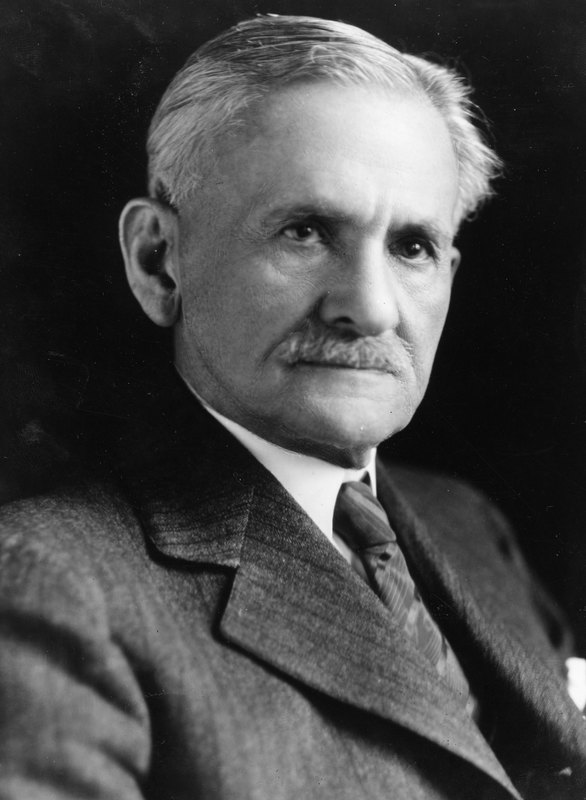Albert Michelson

National Bureau of Standards Archives, courtesy AIP Archives, W. F. Meggers Collection
Honorary Member Albert Michelson was born in Strelno, Prussia, on 19 December 1852. Two years later his family emigrated to the United States to settle at Virginia City, Nevada, but they eventually moved to San Francisco where Michelson received his early education in public schools and graduating from the high school in 1869.
He was appointed by President Ulysses S. Grant to the U.S. Naval Academy and, after graduation as ensign in 1873 and a two-year assignment in the West Indies, became an instructor in physics and chemistry at the Academy. In 1879, he was posted to the Nautical Almanac Office in Washington, D.C., but the following year, he obtained leave of absence to continue his studies in Europe. He visited the Universities of Berlin and Heidelberg, and the College de France and École Polytechnique in Paris.
After resigning from the Navy Michelson returned to the U.S. and over the next decade served on the faculty of the Case School of Applied Science, Cleveland, Ohio, Clark University, Worcester, Massachusetts, and as head of the physics department at the new University of Chicago. He rejoined the Navy during World War I, and in 1918 returned to Chicago where in 1925 he was appointed to the first of the Distinguished Service Professorships. Michelson resigned in 1929 to work at the Mt. Wilson Observatory in Pasadena, Calif.
During his career, Michelson touched on many physics topics but excelled in optics. He performed early measurements of the velocity of light with amazing delicacy and in 1881 he invented his interferometer for the purpose of discovering the effect of the Earth's motion on the observed velocity.
In cooperation with E.W. Morley, and using the interferometer, it was shown that light travels at a constant speed in all inertial systems of reference. The instrument also enabled distances to be measured with greater accuracy by means of the length of lightwaves. At the request of the International Committee of Weights and Measures, Michelson measured the standard meter in terms of wavelength of cadmium light. He invented the echelon spectroscope and during his wartime service in the Navy performed research on devices for naval use. One device, a rangefinder, was adapted as part of U.S. Navy equipment. On his return to civilian life, Michelson became more interested in astronomy and in 1920 using light interference and a highly developed version of his earlier instrument he measured the diameter of the star Betelgeuse: this was the first determination of the size of a star that could be regarded as accurate.
Michelson contributed numerous papers to many scientific periodicals and among his more substantial works are: Velocity of Light;Light Waves and their Uses (1899-1903); and Studies in Optics.
In addition to winning the Nobel Prize for Physics in 1907, Michelson was honored by memberships in many professional societies throughout America and 10 European countries. He received honorary science and law degrees from 10 American and foreign universities. He was president of the American Physical Society, the American Association for the Advancement of Science, and the National Academy of Sciences. He was also a fellow of the Royal Astronomical Society, the Royal Society of London and The Optical Society, and an Associate of l'Académie.
In 1922, he, along with S. W, Stratton, was named an Honorary Member in recognition of his preeminent service in the advancement of optics.
Albert Michelson died on 9 May 1931.
My greatest inspiration is a challenge to attempt the impossible.
Document Created: 26 Jul 2023
Last Updated: 28 Aug 2023
